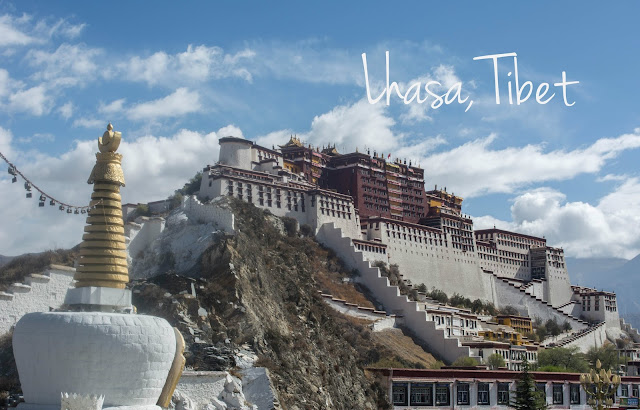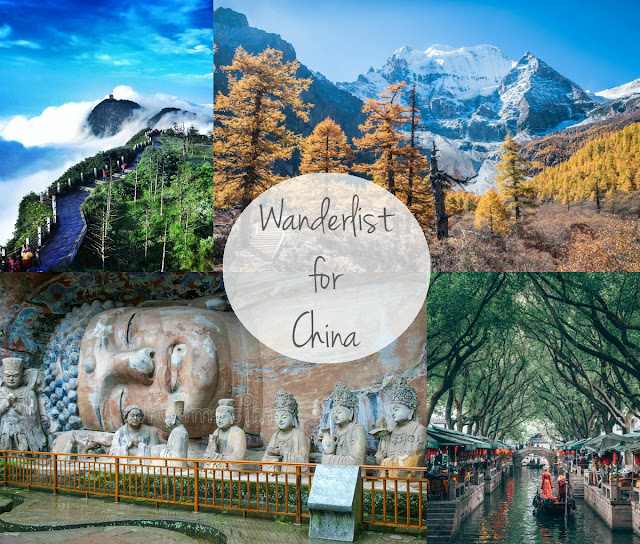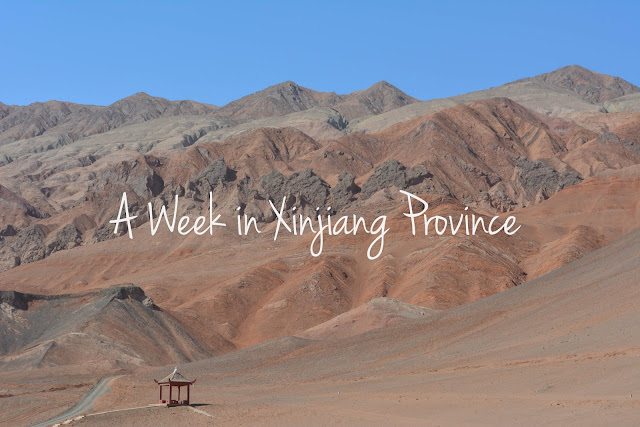Lhasa, Tibet
I've just gotten back from a big trip to Tibet and Xinjiang Province. This will be the first of my four blog posts about my trip!
If you've ever looked into going to Tibet as a foreigner, you'll know that it's logistically complicated and expensive. My trip was not really an exception, but the stars happened to align and I was able to go. I already had a visa, since I'm studying in China. I used qunar.com to buy my flights, which meant I was able to buy flights for a FIFTH of the price English websites were selling them for. I also got a bit of a discount on the tour. Finally, I stayed in dorm rooms for the whole trip and ate as cheaply as possible. It wasn't a cheap trip by any means, but I saved wherever I could to make it happen.
I've been wanting to go for a long time. For years I had it in my head as this romantic, spiritual, and pristine place of Buddhism and snow-covered mountains. In the months leading up to my trip, I read a lot about Tibet. I did research on the culture and politics, which I highly recommend before going. After reading about the area, especially the book Tibet, Tibet, my expectations changed drastically. I had a much more realistic image of the place, which was such good preparation. Pretty much all I learned about the region deepened my experience in Tibet and what I saw there really matched up with what I had been reading. It wasn't a spiritual experience, it's not an exotic and isolated paradise. It's a developing part of a modern country, which has a completely foreign and beautiful culture with a complicated history.
I also had altitude sickness and a cold for pretty much the whole trip. That really colored my experience and made me really tired and generally uncomfortable the whole trip. It didn't really stop me from doing anything, but it definitely slowed me down. Given all these things, I wouldn't say my time in Tibet was 'good' in the traditional way you have a good time on holiday. I learned a lot about China & Tibet. I learned about altitude sickness. I learned about present-day life in Tibet. It was an invaluable and unforgettable experience.
I have also been asked whether I would go back. I wouldn't go back unless they made it unrestricted for foreigners so they could go without a tour group. I hate traveling in groups, and this was no exception. It was a limitation I was willing to accept and it's part of the deal, so I don't regret it. It's just definitely not the way I'm used to traveling.
Without further ado, here's what I did in Lhasa. On my first day, I was on my own, so I basically just walked around the Potala Palace and rested as much as I could. I did sort of make a beeline for the Potala Palace, though, because it's such a symbol of Tibet and I had been dying to see it. It's crazy to think about what's happened in that building and how long it's been around.
I also had a really good time walking around the streets of Lhasa.
The next day, the tour officially started. We went to two monasteries. We went first to Drepung Monastery, which is just outside of Lhasa.
It's on the side of a mountain looking over the valley and another range of mountains - pretty incredible!
 |
| How many monks can you fit into a taxi? |
It was a sunny, blue-sky day (like most days in Tibet), which was so pleasant after being in eastern, polluted China. It made the whitewashed walls pop and look incredible against the barren landscape.
Napping dogs were a theme at this monastery.
This was once one of the largest monasteries in Tibet, with between 8,000-10,000 monks, but now it only has between 200-300 monks.
There are still signs of life though, don't worry.
This was my favorite monastery we went to. I don't know why. It was fairly empty (tourist-wise) and the weather was perfect. It felt the most spiritual out of all the monasteries and temples we went to, I think because it showed the least signs of damage.
We spent the afternoon at Sera Monastery.
The main reason Sera Monastery is famous is because the monks debate every afternoon. They gather in the courtyard and have one-on-one discussions about what they studied in the morning. It's very lively, but it seems stressful if you're the one sitting down (who has to answer the questions).
The next day we went to the Potala Palace in the morning. We got a proper look at the front and we got to go inside (but we couldn't take pictures inside!). Outside there were many children prostrating for money.
The Potala Palace is even more incredible up close. Look at those colors (is white a color?)!
 |
| Same view as on the 50 RMB note! |
The Potala Palace, while parts of it are empty or show evidence of damage from the Cultural Revolution, it is an incredible place. My favorite room was the room where the Dalai Lama had his lessons. It almost felt like he was there. I'm not a Buddhist, but I can appreciate his importance.
After lunch at a family restaurant (where I had a delicious curry), we went to Jokhang Temple, which is the most sacred temple in all of Tibet. The most sacred statue (and pretty much the only original statue left) is a statue of the Buddha, which was made in India out of clay while the Buddha was still alive. Pretty crazy!
The next day we left for Shigatse on journey to the Everest Base Camp! I'll be writing more about that in my next blog post!































Comments
Post a Comment